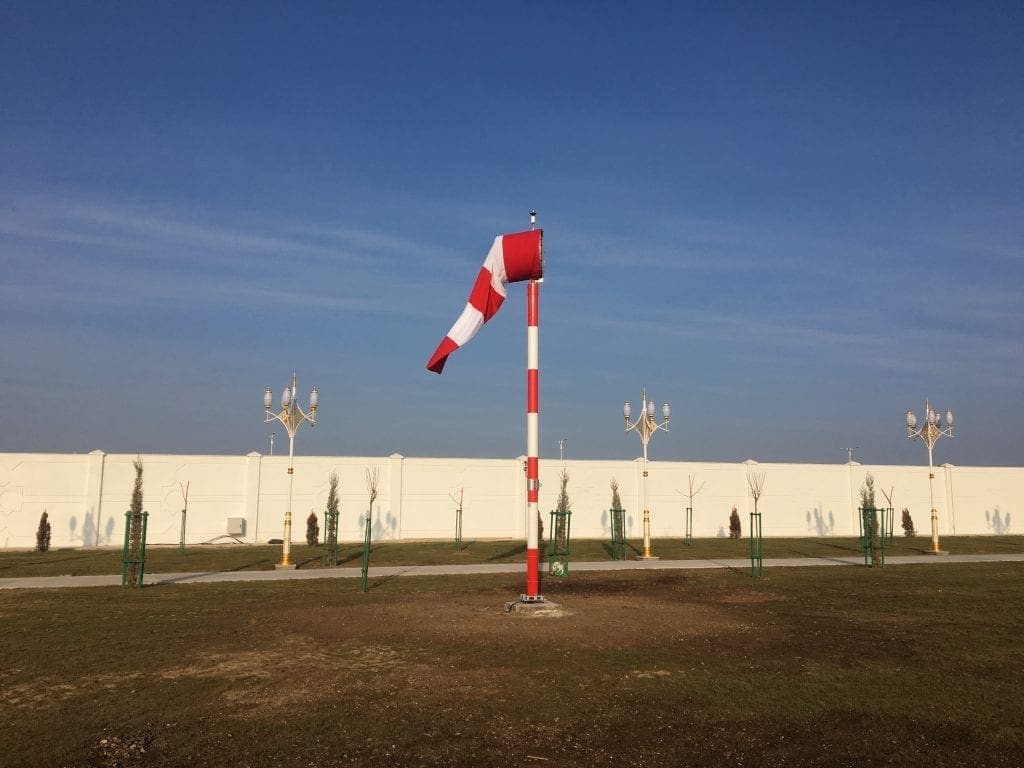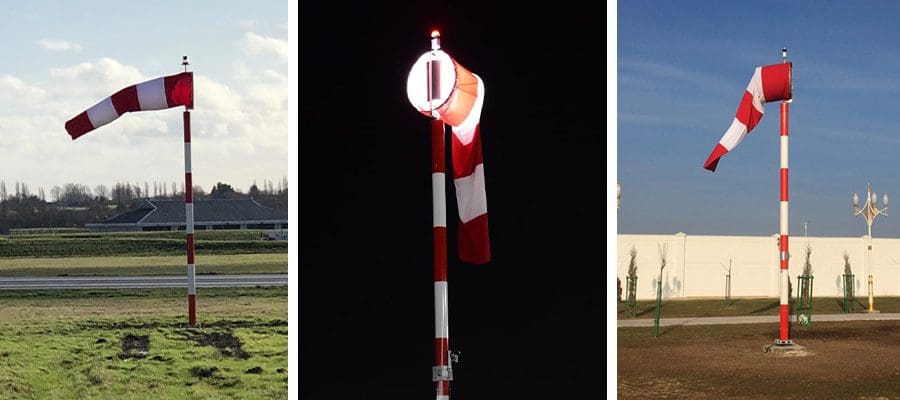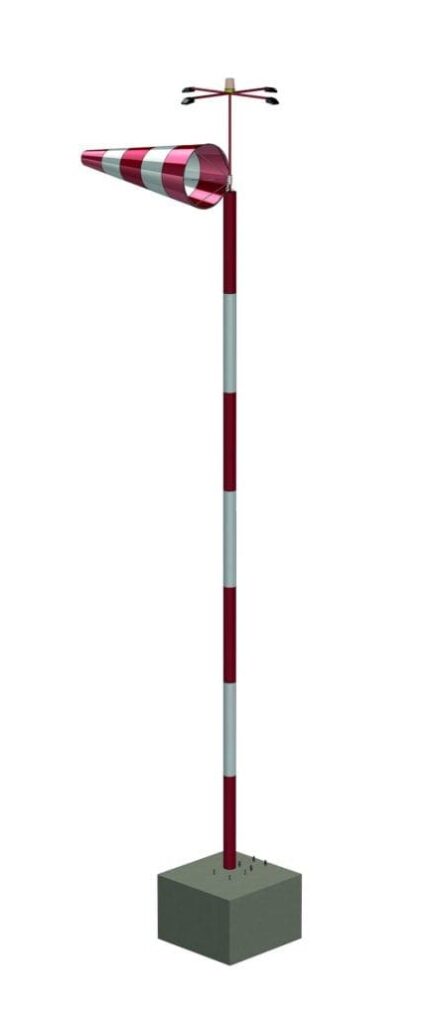The purpose of a windsock is to provide real-time information about wind direction and wind speed. They are essential tools used at airfields and airports as they play a critical role in ensuring the safety and efficiency of aviation operations. Keep reading for information on some of the applications of windsocks.
Measuring wind direction
A windsock’s primary purpose is to indicate the direction of the wind. Pilots, air traffic controllers, and ground personnel can quickly assess wind direction by observing the windsock’s orientation. This information is vital to aircraft taking off, landing, or taxiing along the runway. It helps them align with whichever runway offers the best headwind or crosswind to ensure a safe and efficient flight.
 Measuring wind speed
Measuring wind speed
Windsocks can also be used to estimate wind speed based on the windsock’s fullness and movement. A fully extended and horizontal windsock typically indicates strong winds, while a limp or drooping windsock suggests calm or very light winds. This information aids pilots in making appropriate decisions about landing speeds.
Ensuring safety
Windsocks contribute to safety by ensuring that aircraft take off and land into the wind, when possible. This allows for shorter ground distances required for takeoff, increased lift for takeoff, and a lower ground speed for landing, making it safer and more efficient. Knowing the wind direction is crucial in avoiding crosswind landings, which can be challenging for pilots.
Planning flights
Windsocks help pilots and flight planners make informed decisions about route selection, fuel calculations, and alternate airport choices. Accurate information about wind speed and direction ensures that aircraft are prepared for the expected conditions throughout their flight. In the case of emergencies, such as an engine failure during takeoff or landing, pilots can quickly glance at windsocks to make immediate decisions about whether to continue or abort a flight’s takeoff or landing based on the current wind conditions.
Operating helicopters
Windsocks are also used for helicopter operations, providing essential information for pilots when performing manoeuvres, such as hovering, landing, or taking off in variable wind conditions.
Maintaining safety
Airfield maintenance staff may use windsocks to assess wind conditions when conducting runway inspections and maintenance tasks. This ensures the safety of maintenance operations. All in all, windsocks are vital instruments at airfields, helping to provide real-time information about the wind. They effectively support safe and efficient aviation operations, from takeoff and landing to flight planning and emergency situations.

Why choose Pollite for windsocks and windsock masts
All Pollite Windsock masts are designed for long life and easy installation. Manufactured from fiberglass and polyester resin, and finished with a UV resistant gel coat, each pole has a unique break system incorporated within the main mast and can be coloured to meet ICAO/ FAA specifications. If illumination is required, both internal and external lighting options are available, both with LED or Halogen variants. Our latest low power LED technology means more light for less power, allowing the entire windsock to be illuminated and clearly visible, and also come with a 50,000hr guarantee.
All windsocks are manufactured in-house from only the highest quality polyester, and are designed to meet ICAO, FAA and CAA requirements for size, material and colour. Our materials are tested and treated against UV fading, moisture degradation and harsh conditions. Client specific colours can be provided and all colours used are designed to give maximum contrast with their background.
Contact us now to discuss your project requirements.

 Measuring wind speed
Measuring wind speed